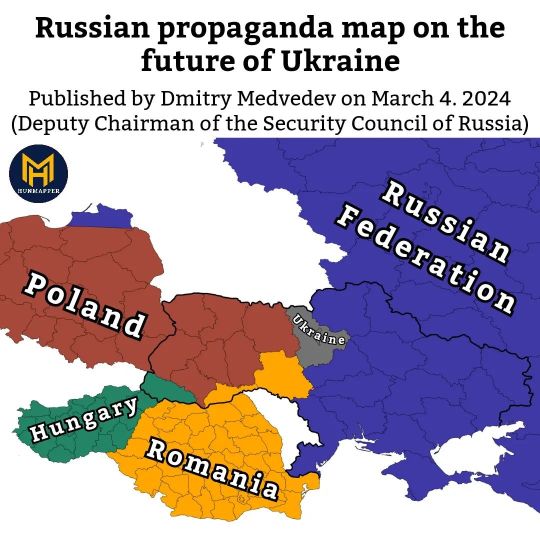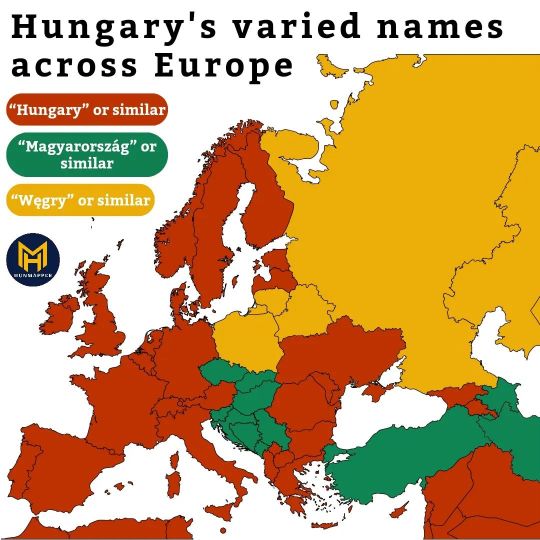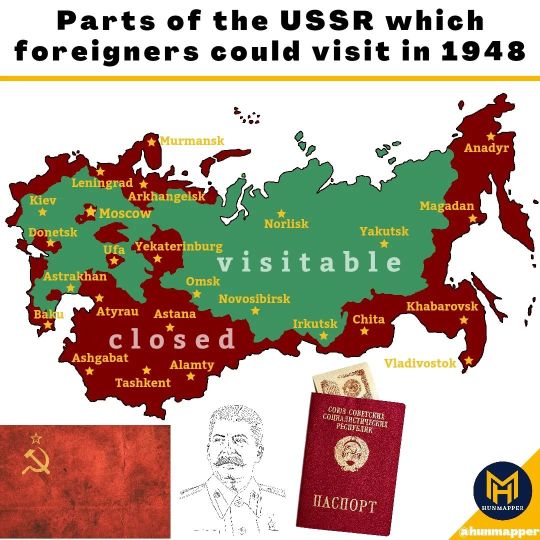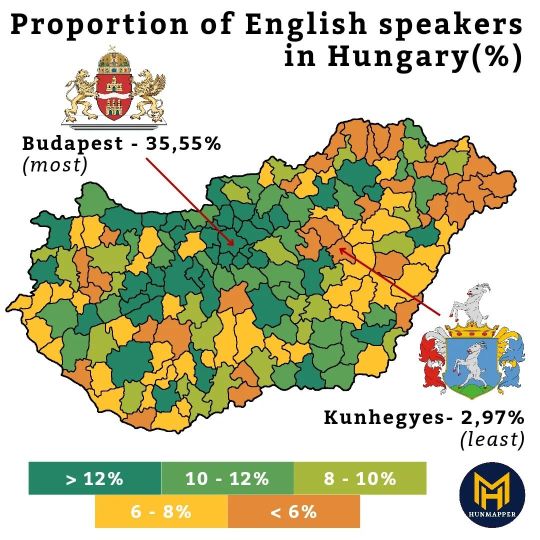#hunmapper
Photo

European regions wetter or drier than London.
by hunmapper
London's reputation as a perpetually rainy city has its roots in a combination of climatic patterns, historical anecdotes, and perhaps a touch of British humor. The city does experience a fair share of rainfall throughout the year, with damp and overcast days contributing to the stereotype. London's maritime climate, influenced by its proximity to the Atlantic Ocean, results in relatively mild temperatures but also brings about frequent and unpredictable showers.
624 notes
·
View notes
Photo

#italian #irredentism @hunmapper https://www.instagram.com/p/CBupJm2C5Mv/?igshid=1g1trcczjjswq
0 notes
Photo

How many letters are in each European alphabet?
by hunmapper
Latin Alphabet Dominance: Most European languages use the Latin alphabet, which originated from the ancient Romans. This alphabet has been adapted and modified to suit the phonetic needs of various European languages. Cyrillic Alphabet: While many European languages use the Latin script, some, like Russian, Bulgarian, and Serbian, use the Cyrillic alphabet. This script was developed in the First Bulgarian Empire during the 9th century by Saints Cyril and Methodius. Special Characters: Several European languages include special characters in their alphabets. For example, German has the "umlaut" (ä, ö, ü), French uses accents (é, è, ê), and Spanish has the "ñ." These characters often indicate specific phonetic nuances. Diacritical Marks: Diacritical marks, such as accents, tilde, and cedilla, are commonly used in European alphabets to modify the pronunciation of letters. For example, in Spanish, the letter "ñ" is pronounced differently than "n." Scandinavian Languages: The Scandinavian languages, including Danish, Norwegian, and Swedish, use a modified version of the Latin alphabet that includes additional characters such as å, ä, and ö. Gaelic Alphabets: Irish and Scottish Gaelic have their own distinct alphabets. The Irish Gaelic alphabet, for instance, has 18 letters, and it includes accented characters and a unique order compared to the standard Latin alphabet. Greek Alphabet Influence: The Greek alphabet has had a significant impact on European alphabets. Several letters from the Greek alphabet have been incorporated into the Latin script, especially in scientific and mathematical contexts.
361 notes
·
View notes
Photo

Russia's control over the annexed regions of Ukraine after 2 years of war
The Russian invasion of Ukraine began on 24. February 2022. In the first weeks Russia made significant territorial gains. However Ukraine had won the most important battle of the war: the Battle of Kyiv. Russian troops retreated from Northern Ukraine by April 2022. Russia captured Mariupol in May 2022 following a destructive siege. On 30 September 2022 the Russian Federation formally annexed Donetsk, Luhansk, Kherson and Zaporizhia oblasts although not entirely controlling any of them. The Ukrainians launched successful counteroffensives in Kharkiv and Kherson oblasts, liberating Kherson city. The Russians managed to take Bakhmut and Avdiivka of Donetsk oblast. As of today the war is in a stage called war of attrition with minimal territorial gains and large losses on both sides.
by hunmapper
180 notes
·
View notes
Photo

Russian propaganda map on the future of Ukraine
Published by Dmitry Medvedev (deputy Chairman of the Security Council of Russia) on March 4, 2024.
by hunmapper
Medvedev defined all territories on the left bank of the Dnipro River, and many on the right bank, as supposedly "integral" to Russia and within its "strategic historical borders." Russian forces currently occupy only a part of the eastern (left) bank of Ukraine but do not occupy any territory on the right bank of Ukraine. He presented his lecture against the backdrop of a self-created fantasy map of eastern Europe, depicting parts of western Ukraine under Hungarian, Polish, and Romanian control. The map shows Ukraine existing as a rump state only within the borders of Kyiv Oblast and the rest of modern-day Ukraine as part of Russia — well beyond the areas that Russian forces currently occupy, encompassing Crimea and the four partially occupied oblasts Medvedev claimed that the influence of sovereign great powers, like Russia, extends beyond their geographic borders, reiterating an earlier statement by the Russian dictator Vladimir Putin that "Russia's borders do not end anywhere" Additionally, he alleged that a state's "strategic borders," distinct from its geographical borders, depend on “how strong and sovereign” the state and its authorities are. The more "powerful" a state is, the “further its strategic frontiers extend beyond its state borders” and the larger the state’s sphere of “economic, political, and socio-cultural influence”
158 notes
·
View notes
Photo

Hungary's varied names across Europe
by hunmapper
Hungary: The English word "Hungary" is derived from the Medieval Latin term "Hungaria," which originally came from the Old Church Slavonic word "Ǫgǫry" or "Ǫgǫri," referring to the people living to the southeast of the Germanic tribes. The root of this word might be related to the Huns, who were a nomadic people in the region during the early Middle Ages.
Magyarország: In Hungarian, the official language of Hungary, the country is referred to as "Magyarország." This term is a combination of "Magyar," which is the ethnic group of the Hungarian people, and "ország," meaning "country" or "land." Therefore, "Magyarország" translates to "Land of the Magyars" or "Country of the Hungarians."
Węgry: The term "Węgry" is the Polish name for Hungary. It has its roots in the medieval Slavic term "Ugric," which originally referred to the Ugric people, an ancient ethnic group that included the Magyars. Over time, the term evolved, and in Polish, it became "Węgry."
153 notes
·
View notes
Photo

NATO in Europe, 2024.
by hunmapper
Hungary’s parliament overwhelmingly approved Sweden’s bid to join NATO on 26th February, clearing the way for the Nordic nation’s accession to the alliance after nearly two years of intense negotiations and dealing a geopolitical blow to Russian President Vladimir Putin.
Getting approval from the Hungarian parliament was the final hurdle for Stockholm joining NATO. Swedish Prime Minister Ulf Kristersson visited Budapest on Friday to discuss defense and security cooperation with his Hungarian counterpart, Viktor Orban. The two sides appeared to reconcile, agreeing on a deal that would see Hungary acquire four new Swedish-made Gripen fighter jets.
Of the 194 members of parliament who voted, just six rejected Sweden’s accession.
“Today is a historic day,” Kristersson said on X shortly after the vote. “Sweden stands ready to shoulder its responsibility for Euro-Atlantic security.”
118 notes
·
View notes
Photo

Parts of the USSR which foreigners could visit in 1948
by hunmapper
During the late 1940s and early 1950s, the Soviet Union had stringent policies regarding foreign citizens' access to various areas within its borders. These policies were largely driven by security concerns, particularly in the aftermath of World War II and during the early years of the Cold War. Here are some key points regarding the Soviet Union's policies on foreign citizens' access during the 1947-1953 period:
Restricted Access to Sensitive Areas: The Soviet Union tightly controlled access to certain regions deemed strategically sensitive or militarily significant, such as border areas, military installations, and areas with industrial or scientific importance. Foreigners were typically prohibited from visiting these areas without special permission.
Closed Cities: The Soviet Union established numerous closed cities (закрытые города) or secret cities (секретные города) throughout the country, which were off-limits to foreign citizens and even many Soviet citizens. These cities were often associated with sensitive military or research facilities, such as nuclear research centers or weapons manufacturing plants.
Visa Requirements and Travel Restrictions: Foreign citizens wishing to visit the Soviet Union during this period were generally required to obtain a visa and adhere to strict travel regulations. The Soviet government closely monitored the movements of foreign visitors and restricted their access to certain regions deemed off-limits.
Propaganda Tours: Despite the restrictions on travel, the Soviet government occasionally organized guided tours for foreign delegations or individuals, primarily for propaganda purposes. These tours were carefully orchestrated to showcase the Soviet Union's achievements and to convey a positive image of the country to foreign visitors.
115 notes
·
View notes
Photo

Language families of Austria-Hungary in 1910.
by hunmapper
Multinational Empire: Austria-Hungary was characterized by its diverse ethnic composition, encompassing a wide array of ethnic groups and languages. The empire included Germans, Hungarians, Czechs, Slovaks, Poles, Ruthenians, Romanians, Croats, Serbs, Slovenes, Italians, and others. Dual Monarchy: The Austro-Hungarian Empire was officially known as the Dual Monarchy because it consisted of two separate entities, the Austrian Empire and the Kingdom of Hungary, each with its own government and institutions. The two entities shared a monarch (Emperor Franz Joseph I from 1867 to 1916), who ruled both parts of the empire. Germans and Hungarians: The Germans and Hungarians were the two largest ethnic groups in Austria-Hungary. The Germans were predominant in the Austrian part of the empire, while the Hungarians were the majority in the Kingdom of Hungary. The dual structure reflected the compromise reached in 1867 to balance the power between these two major groups. Slavic Diversity: The Slavic population was significant and diverse within Austria-Hungary. This group included Czechs, Slovaks, Poles, Ruthenians (Ukrainians), Serbs, Croats, and Slovenes. The empire struggled to manage the national aspirations and demands for autonomy from these various Slavic groups. Nationalism Challenges: Nationalism was a major challenge for Austria-Hungary, as various ethnic groups sought greater autonomy and independence. The rise of nationalism contributed to tensions and conflicts within the empire, ultimately playing a role in its dissolution after World War I. Balkan Component: The empire extended into the Balkan region, incorporating territories with a mix of South Slavic, Romanian, and other ethnic groups. The Balkan component added another layer of complexity to the ethnic mosaic and contributed to the geopolitical challenges faced by the empire.
115 notes
·
View notes
Photo

Indoeuropean languages in Europe
Historical Roots: The Indo-European language family is believed to have originated in the Eurasian Steppe around 4000-2500 BCE. From there, groups of speakers migrated to various parts of Europe, contributing to the linguistic diversity of the continent.
by hunmapper
Language Diversification: Indo-European languages in Europe have evolved into numerous branches and sub-branches. Some of the major branches include:
Romance Languages: Descendants of Latin, including French, Spanish, Italian, Portuguese, and Romanian.
Germanic Languages: Including English, German, Dutch, Swedish, and others.
Slavic Languages: Such as Russian, Polish, Czech, and Bulgarian.
Celtic Languages: Including Irish, Scottish Gaelic, and Welsh.
Hellenic Languages: Mainly Greek.
Baltic Languages: Such as Lithuanian and Latvian.
Indo-Iranian Languages: Including Hindi, Bengali, and Persian.
Cultural Significance: Indo-European languages have played a pivotal role in shaping European culture, history, and literature. Greek and Latin, for instance, have had a profound influence on science, philosophy, and the development of the Roman Empire.
Language Revival: Some Indo-European languages in Europe, such as Irish and Welsh, have experienced language revival efforts in recent decades. These efforts aim to preserve and revitalize languages that were declining in usage.
Language Contact: Due to centuries of contact and migration, many Indo-European languages have borrowed words and phrases from each other. This phenomenon, known as linguistic borrowing, has enriched the vocabulary and expressions of these languages.
182 notes
·
View notes
Photo

Proportion of English speakers in Hungary.
by hunmapper
Districts with the highest % of English speakers: ✅ Budapest - 35.55% ✅ Budakeszi - 33.08% ✅ Szentendre - 29,83% ✅ Dunakeszi - 28.45% ✅ Pilisvörösvár - 27.27% Lowest % of English Speaker: ❌ Kunhegyes - 2.97% ❌ Fehérgyarmat - 3.15% ❌ Cigánd - 3.21% ❌ Bácsalmás - 3.32% ❌ Vásárosnamény - 3.62%
67 notes
·
View notes
Photo

Calvinists in the Kingdom of Hungary, 1900.
During the late 19th and early 20th centuries, Calvinism had a significant presence in Hungary, particularly among ethnic Hungarian communities.
Here are some key points about Calvinists in Hungary around 1900:
Historical Context: Hungary, at the turn of the 20th century, was part of the Austro-Hungarian Empire. Calvinism had a long history in the region, dating back to the Reformation in the 16th century when it spread across Europe.
Religious Minority: Calvinists were a religious minority in Hungary, alongside Catholics and other Protestant denominations. Despite being a minority, they often held significant influence in certain regions, particularly in Transylvania.
Transylvanian Calvinism: Transylvania, which was part of Hungary at the time, had a strong Calvinist presence. The Edict of Torda in 1568 granted religious freedom to Calvinists and other religious minorities in Transylvania, making it a haven for Protestantism in Eastern Europe.
Education and Culture: Calvinists in Hungary placed a strong emphasis on education and literacy. They established schools and colleges to educate their communities, contributing to the development of Hungarian culture and intellectual life.
Political Influence: Calvinists, like other religious groups, played a role in Hungarian politics. They were often involved in movements advocating for greater autonomy or rights for ethnic Hungarians within the Austro-Hungarian Empire.
Social Impact: Calvinist communities in Hungary were often tightly knit, with strong social bonds within their congregations. They participated in various social and charitable activities to support their members and the wider community.
Cultural Contributions: Calvinists contributed to Hungarian literature, music, and arts. Many prominent Hungarian intellectuals and cultural figures came from Calvinist backgrounds.
by hunmapper
59 notes
·
View notes
Photo

Distribution of Persian languages in Iran, Afghanistan and Tajikistan
Note: Due to the lack of reliable data this map shall be taken with a grain of salt. This map includes all Persian languages (Farsi, Lufi, Luri, Tajiki, Khorasani, Kabuli etc.). Areas populated with a non-Persian speaking majority, sparesly populated areas and areas outside Iran, Afghanistan, Tajikistan (and Bahrain) are shown in white.
by hunmapper
55 notes
·
View notes
Photo

Territorial gains of Poland following the Great War
Note: this map shows when each territorial gain became official, and not the date of actual conquest.
by hunmapper
106 notes
·
View notes
Photo

The Eyalet of Bosnia in 1600
The Eyalet of Bosnia was an Ottoman administrative division that existed from 1580 to 1867, encompassing the region of Bosnia and parts of Herzegovina. While the topic might not be widely known or discussed, here are some interesting facts about the Eyalet of Bosnia:
by hunmapper
100 notes
·
View notes
Photo

The Siege of Budapest as of 25 December 1944.
by hunmapper
In December 1944, the Red Army's progression around Budapest was marked by a series of strategically executed maneuvers. The Soviet forces, under the command of Marshal Rodion Malinovsky, aimed to encircle and capture the Hungarian capital, which was a key stronghold for the Axis powers.
67 notes
·
View notes